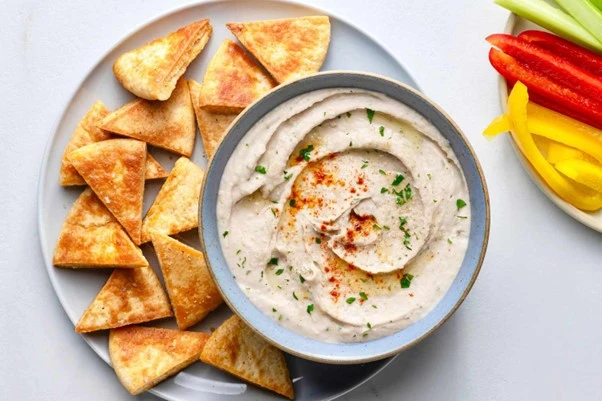Hummus Market Size, Share, Price, Trends, Growth, Report & Forecast 2023-2028
Hummus, a creamy dip native to the Middle East, has found its way into kitchens and eateries across the world. The global hummus market size achieved an impressive value of approximately USD 3.9 billion in 2022. The appetite for this delicious spread is not slowing down anytime soon, with the market expected to grow at a compound annual growth rate (CAGR) of 10.92% between 2023 and 2028, ultimately reaching a value of USD 7.1 billion by 2028. This blog post aims to provide a comprehensive overview of the hummus market, discussing its components, market segmentation, benefits and applications, driving factors, challenges, barriers, and future market opportunities.
Overview of the Hummus Market
Hummus, a dip or spread made primarily from cooked, mashed chickpeas blended with tahini, olive oil, lemon juice, and garlic, has become a globally recognized dish. It is a staple in Middle Eastern, Mediterranean, and increasingly, Western diets. The surge in demand for hummus can be attributed to its rich flavor profile and numerous health benefits, making it popular among health-conscious consumers and gourmet food enthusiasts alike.
Components of Hummus
At its most basic, hummus consists of four key components:
Chickpeas (Garbanzo Beans): These legumes form the bulk of the spread, providing a rich, creamy texture and significant nutritional value.
Tahini: This paste made from sesame seeds adds a unique, nutty flavor to the hummus.
Olive Oil: Used both in the hummus and as a garnish, olive oil adds richness and helps create a smooth texture.
Lemon Juice and Garlic: These ingredients give hummus its characteristic tangy flavor.
Over time, numerous flavor variations have evolved, incorporating ingredients like roasted red pepper, sun-dried tomatoes, jalapenos, and more.
Market Segmentation
The hummus market can be segmented based on various factors:
Product Type: This includes classic hummus, lentil hummus, edamame hummus, garlic hummus, black hummus, and more. The classic hummus variant holds a significant market share due to its widespread popularity.
Distribution Channel: 1. Hummus is sold through supermarkets/hypermarkets
- Convenience stores
- Online retailers
Supermarkets/hypermarkets dominate due to their extensive reach and variety of offerings.
Region: Geographical segmentation includes North America, Europe, Asia Pacific, and others. North America currently leads the market, thanks to the growing popularity of Mediterranean cuisine.
Benefits and Applications of Hummus
Hummus is renowned for its health benefits. It is high in fiber, protein, vitamins, and minerals and low in saturated fat. These attributes make it a favored choice for individuals pursuing a healthy lifestyle or those on plant-based, gluten-free, or Mediterranean diets.
Hummus has numerous culinary applications. It can be used as a dip for bread or vegetables, a spread on sandwiches or wraps, a base for salad dressings, or even as an ingredient in cooking various dishes.
Factors Driving the Hummus Market
Several factors contribute to the growth of the hummus market. The rise in health-conscious consumers and the popularity of plant-based and Mediterranean diets have significantly boosted the demand for hummus. The growing trend of gourmet home cooking and the incorporation of international flavors into local cuisine also drive market growth. The expanding retail landscape, both physical and online, further aids in increasing product accessibility and visibility.
Challenges and Barriers
Despite the robust market growth, the hummus market faces some challenges. Perishability is a significant concern, requiring careful management of the supply chain and storage conditions. There may also be cultural and taste preferences in certain regions that prefer their traditional dips and spreads over hummus.
Market Opportunities and Future Outlook
The future of the hummus market remains promising, with several potential avenues for growth. The increasing consumer interest in vegan and vegetarian diets presents an opportunity for hummus manufacturers. Additionally, there is potential for expansion in emerging markets where the adoption of international cuisines is on the rise.
By 2028, the hummus market is predicted to reach a value of USD 7.1 billion, reflecting the product’s global acceptance and continually rising demand. With the ongoing trend towards healthier, more varied diets, hummus is poised to maintain its place on the global food stage for years to come.

